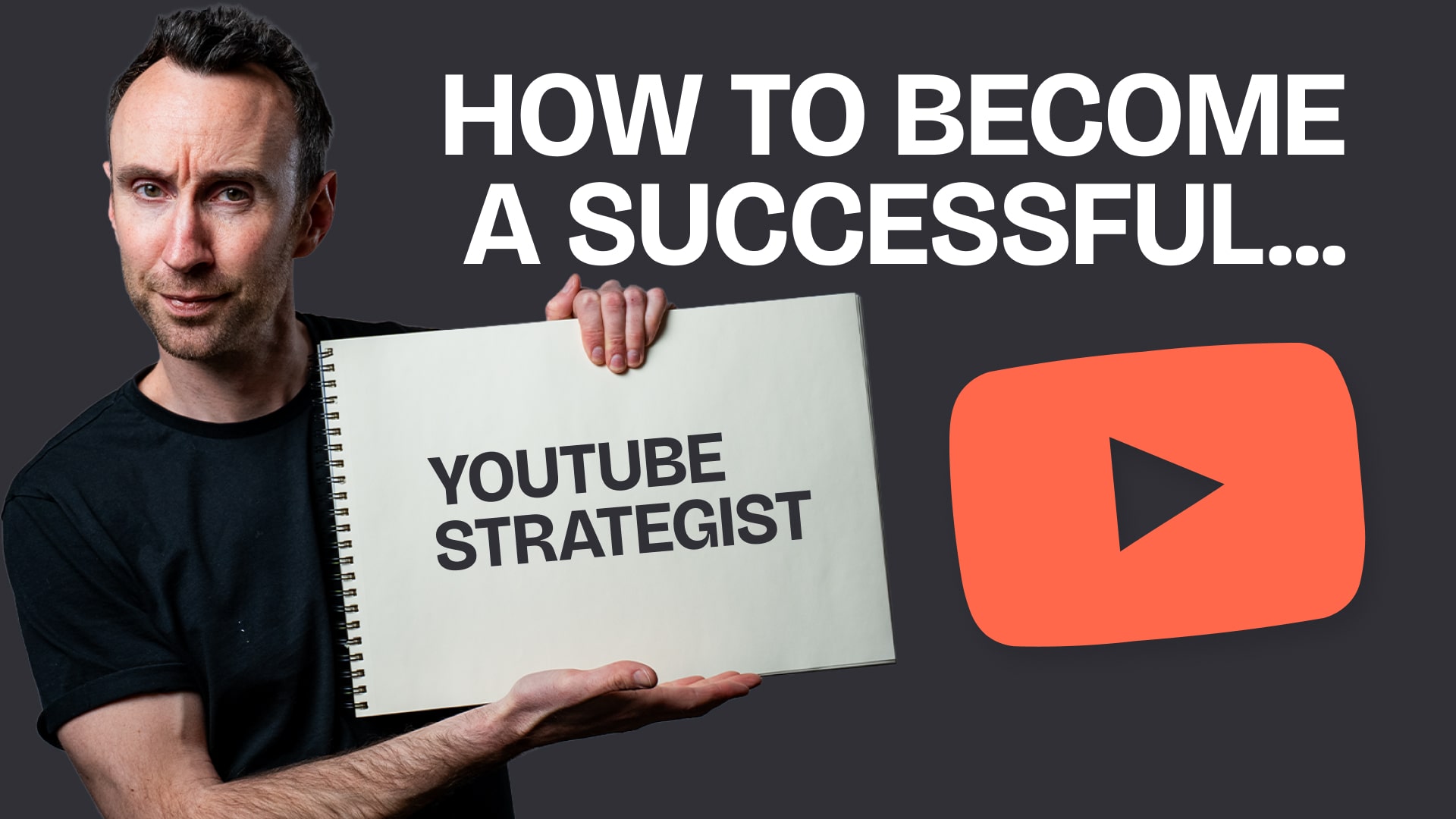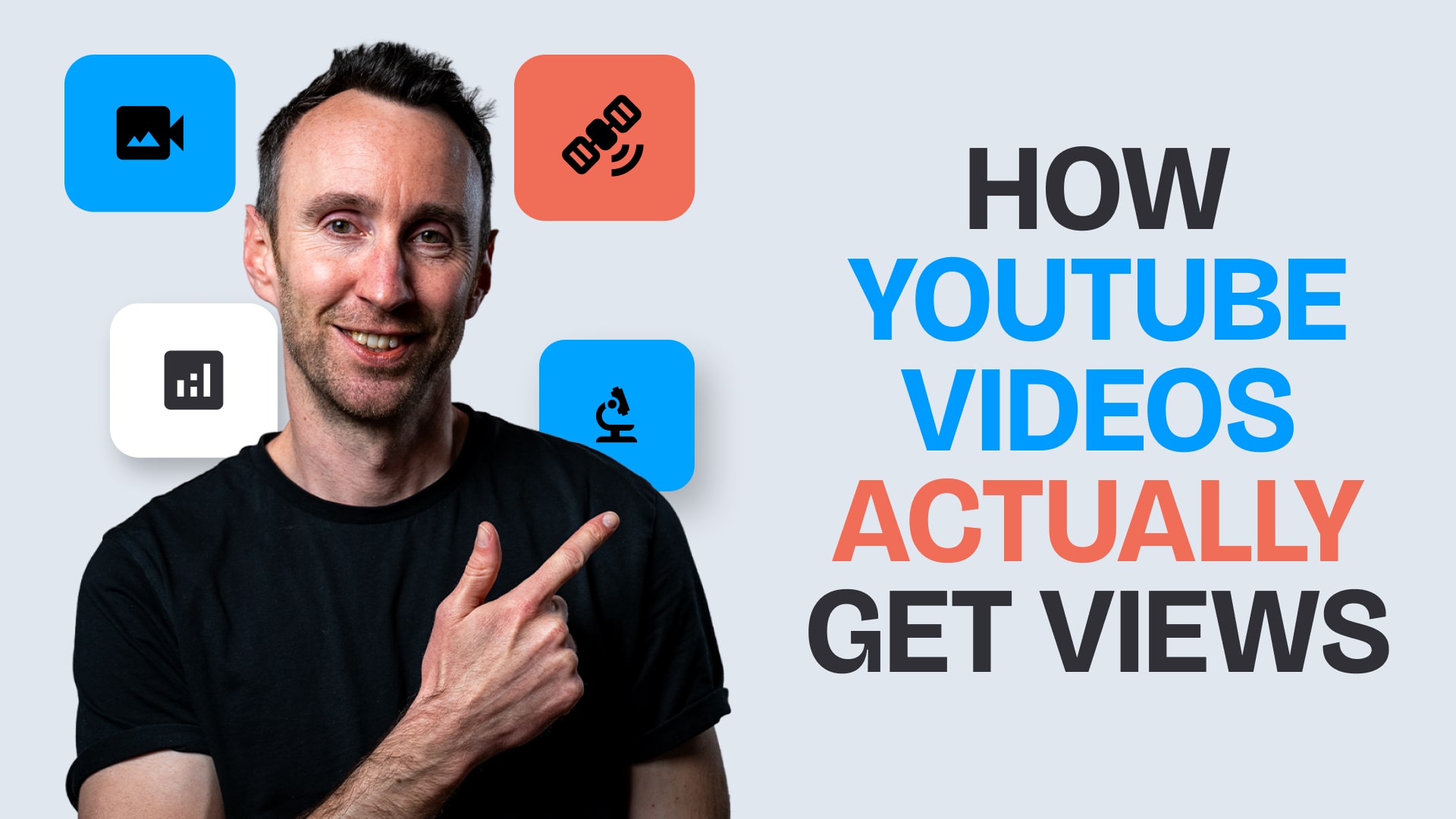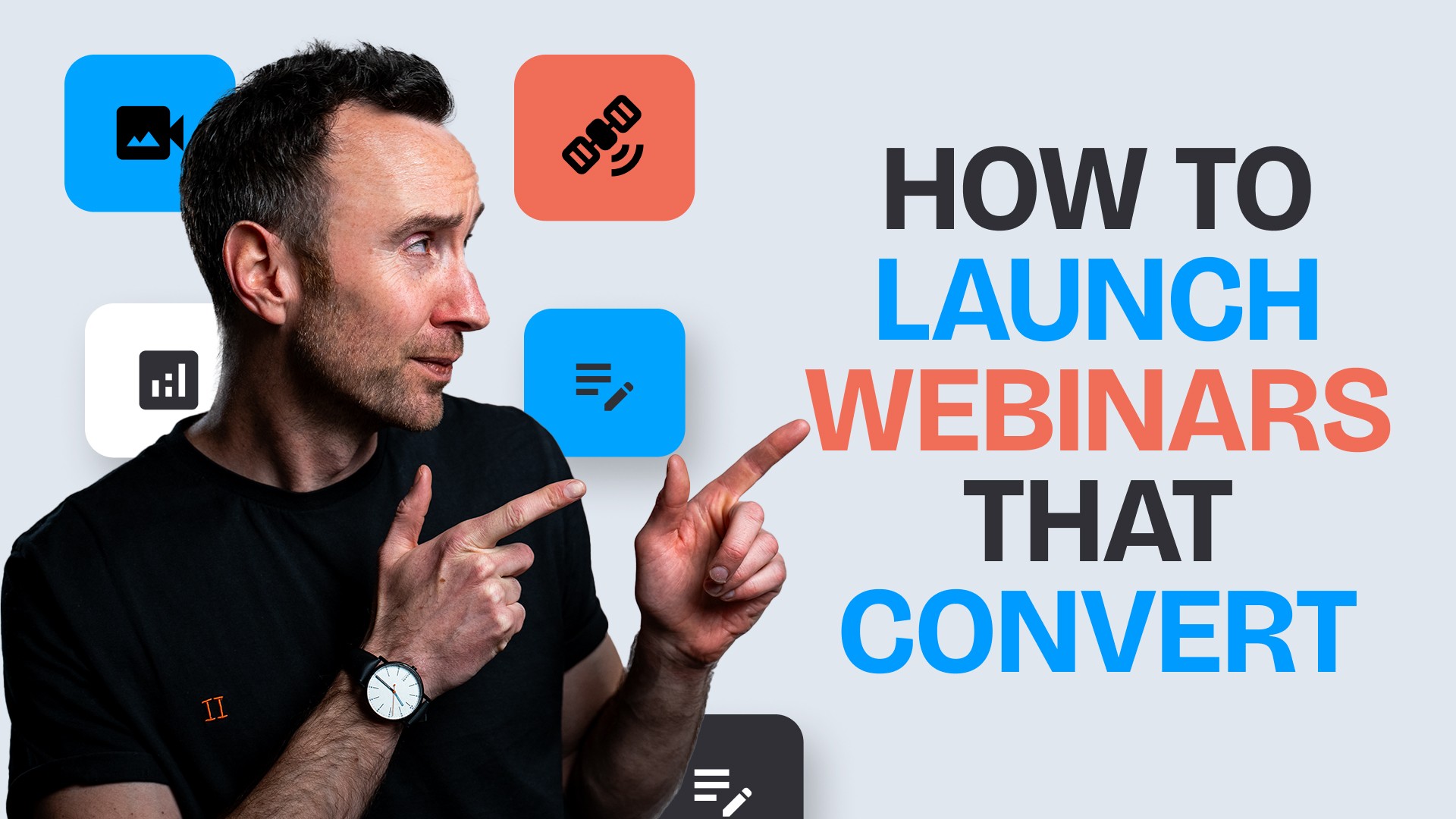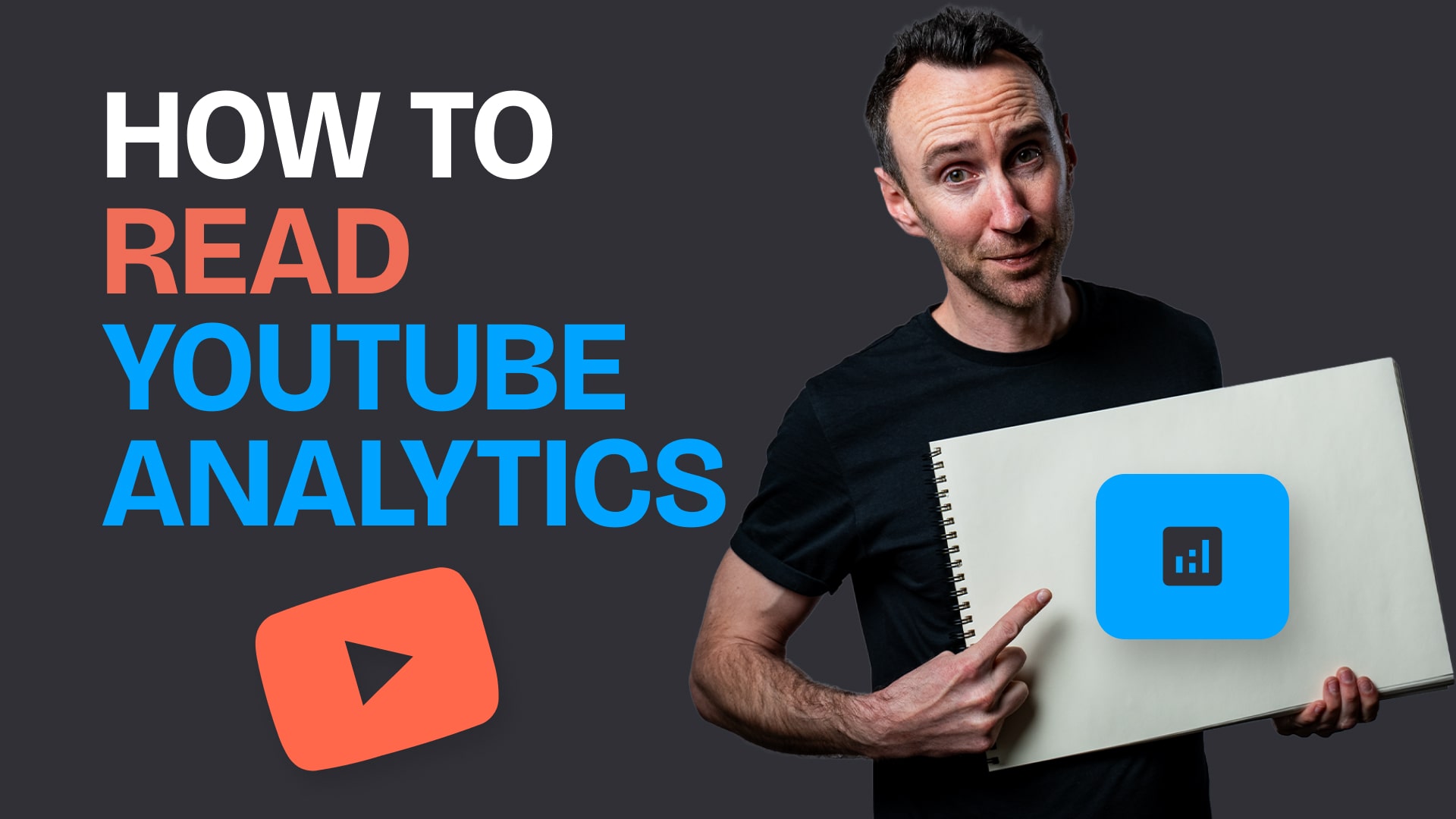BLOG OVERVIEW
How to Become a YouTube Strategist (Even If You’re Starting Small)
In
YouTube
by
Edward Wood
Jun 2, 2025
So, you’ve grown a channel or two. Maybe you’ve figured out thumbnails that work, or you’re the one in your group chat who always knows why a video’s going viral. You’re starting to think, “Wait, could this actually be… a job?”
Good news: it absolutely can. YouTube strategy has evolved into a full-fledged career path, with agencies, brands, and creators all hiring for it. But what is a YouTube strategist, exactly? And how do you get there?
This article is for anyone curious about what a YouTube strategist does, what it takes to succeed, and how to turn your channel experience into a serious career move.
What Does a YouTube Strategist Actually Do?
At a high level, a YouTube strategist is responsible for growing a YouTube channel — not just in views, but in direction, consistency, and business impact.
Think of them as the bridge between content and growth. Their role includes:
Content ideation – What topics should the channel cover, and why?
Title and thumbnail strategy – How can we make this irresistible to click?
SEO and optimization – Are we speaking YouTube’s language behind the scenes?
Audience development – Who is this content really for, and how do we serve them better?
Performance analysis – What’s working, what isn’t, and what’s next?
Depending on the environment — agency, brand, creator, startup — a strategist might also get involved in scripting, uploading, A/B testing, retention analysis, Shorts planning, or repurposing video across other platforms.
The Skills You’ll Need (And How They Show Up in Real Life)
1. YouTube Fluency
This means more than knowing the difference between CTR and AVD. It means you know what “the hook starts too slow” feels like, or why “ranking #3 for a low-volume search term” isn’t actually a win. You can reverse-engineer virality and explain it to a client without sounding like a mystic.
🧠 Real-world example: You spot that a client’s best-performing video has a 12-second intro before the title promise is delivered. You suggest cutting it down to 4 seconds, test it, and see retention at 30 seconds go from 42% to 60%. That’s strategist territory.
2. Analytical Confidence
You don’t need to be a data scientist. But you do need to know what data to look at, how to interpret it, and when to ignore a one-week dip.
🧠 Real-world example: A client wants to scrap a series because views are down. You dig into the analytics and realize the last video had a poor thumbnail — not a bad concept. You tweak the thumbnail and repackage the episode as a Shorts teaser. Boom: it takes off.
3. Strategic Thinking
It’s not just about making good content — it’s about making the right content for the right reason.
🧠 Real-world example: A B2B SaaS brand wants to make YouTube videos for “brand awareness.” You steer them toward a series of how-tos that answer real search queries, creating content that builds brand and drives qualified traffic to their site.
4. Collaborative Execution
You’re rarely working solo. Strategists often sit between creators, editors, designers, marketers, and decision-makers.
🧠 Real-world example: You brief a freelance editor on pacing, make sure the thumbnail team knows the hook, and coordinate with the paid team to align the next organic video with an ad campaign. You’re not managing chaos — you’re creating clarity.
A Real Job Description (And What It Tells Us)
Here’s a distilled, anonymized version of a real strategist role posted on a YouTube job board:
Title: YouTube Growth Strategist
Location: Remote
Type: Full-time
Salary: $60,000–$90,000/yearResponsibilities:
Audit and grow YouTube channels across niches
Develop video topics, thumbnail strategy, titles, and scripting support
Use analytics tools (YouTube Studio, TubeBuddy, etc.) to drive insights
Collaborate with editors, designers, and creators
Track performance and produce growth reports
Requirements:
Proven experience growing channels (your own or clients’)
Strong grasp of YouTube’s algorithm, SEO, and audience development
Ability to translate data into strategy
Excellent communication and time management
What this tells us: real-world strategist roles expect you to own channel growth — not just advise. That means results matter, and communication is everything.
(For more job description examples, check out our companion post: The Best Examples of YouTube Job Descriptions).
How to Become a YouTube Strategist (Even If You're Not There Yet)
Let’s break it down — here’s a roadmap, whether you’ve got 5,000 subs or you’re starting with nothing.
1. Start with Your Own Channel (Or Someone Else’s)
Most strategist careers begin with proof: show you can grow something.
That doesn’t mean you need 1M subs. But it does mean you’ve tested, iterated, and figured out how to improve performance — not just how to post.
If you don’t have your own channel? Partner with a friend. Volunteer to help a local business. Offer strategy sessions to creators on Twitter or Reddit in exchange for testimonials.
2. Build a Portfolio of Wins
A strategist’s résumé isn’t just where they worked — it’s what results they’ve driven.
Document:
Before-and-after analytics
Thumbnails that moved CTR
Title tests that improved impressions
Format shifts that boosted AVD
Series that built community or revenue
Pro tip: Put this in a Notion site, a PDF case study, or a Loom walkthrough. If you can articulate your process and your thinking, you’ll stand out 10x more than someone with a bullet point list.
3. Get Fluent in the Tools
You don’t need to be a wizard, but you should be able to:
Use YouTube Studio like second nature
Run competitive analysis with vidIQ or TubeBuddy
Track performance across multiple KPIs
Use AI tools (like Opus Clip or ChatGPT) for ideation and optimization
Work across formats (Shorts, Lives, long-form)
4. Understand Business Goals, Not Just Content Goals
Strategy doesn’t stop at “more views.” To really stand out, you need to understand how YouTube fits into broader marketing or creator goals.
Are you building top-of-funnel awareness?
Driving affiliate sales?
Creating a proof-of-authority asset?
Building a niche community for long-term monetization?
The more you can talk like a businessperson — not just a content geek — the more trust you’ll earn.
5. Start Freelancing or Apply for Strategy Roles
Once you’ve got some wins, start pitching yourself.
Join communities like YouTube Strategy Club or Creator Now
Browse ytjobs.co, LinkedIn, and relevant Discords
Offer free audits to creators in exchange for testimonials
Reach out to marketing agencies with a YouTube offering and pitch yourself as their strategist add-on
6. Keep Learning (And Publishing)
YouTube moves fast. What worked last month might flop next week.
Stay sharp by:
Subscribing to channels like Paddy Galloway, Channel Makers, and Colin & Samir
Writing LinkedIn posts or Twitter threads about your learnings
Building systems — not just ideas — that help others win
Final Thoughts
You don’t need a degree to become a YouTube strategist. But you do need taste, rigor, empathy, and the ability to own outcomes.
It’s one of the most exciting roles in content right now — creative, data-driven, and deeply impactful.
And if you’re looking to speed up the learning curve? That’s what we do.
About Humble&Brag
We’re Humble&Brag — the full-stack YouTube agency for startups. We help brands turn YouTube into a repeatable growth engine with:
Weekly long- and short-form video production
YouTube Lives, ad support, and marketing integration
Strategy-first content that builds trust, traction, and proof
💬 Want to talk about how we can help your brand grow on YouTube? Book a free strategy call.




